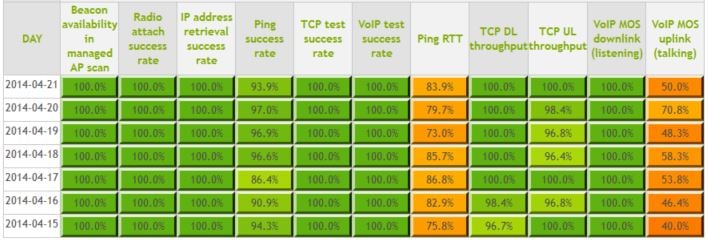Blog
With all the hype surrounding 802.11ac you might be led to believe it's the only way to get more bandwidth. With only one 11ac radio and one 11n radio for nearly twice the price of an 11n AP, it may well be the most expensive way to boost WLAN bandwidth, but it is certainly not the only way. Adding or replacing access points has hidden operational costs too, so before you run out to buy 11ac APs at expensive early-adopter pricing levels, consider how to make better use of the WLAN bandwidth you already have.
Monitoring and tuning the air space
There are lots of reasons why bandwidth is being wasted and your network is under performing. For example, small amounts of interference can increase transmit retries exponentially, tying up airtime and killing performance. Misplacement of APs is another performance killer. Automated channel planning software that isn't tuned properly may be dropping users inadvertently. Then come the repeated reconnections. You can read all about these issues in this free white paper. A way to eradicate these problems is to closely monitor the air-space and measure individual AP performance and the Wi-Fi experience, per band, from a user’s perspective. We've written a WLAN optimization guide to help you. But it would take forever to do this process manually using your existing WLAN management systems. Walking around with spectrum analyzers and speed testers after issues are reported impacts everybody's productivity. But specialized tools like 7signal’s Sapphire performance management system, can continuously and proactively monitor the air and the entire network for you.

The Sapphire system gives you a dashboard showing the areas of your network where performance has fallen below the service level targets you set, and gives you instructions to fix it - like adjust power levels of AP27, or increase beaconing intervals to improve overall air utilization. One by one you can proactively fix problem areas you didn’t even know existed, verify improvements and boost overall WLAN performance by as much as 50 to 100% in some instances. That’s enough to delay your 802.11ac upgrade for a year when pricing will most likely be 25% lower than it is today. The savings can be significant. And next time someone moves the office furniture around without telling you, you’ll know what impact it had on Wi-Fi performance!
If you know that you're already getting the most out of your existing WLAN, then upgrading to 802.11ac may be the logical next step as your bandwidth requirements continue to increase. However, there are some IT professionals who might not be aware of the fact that Wi-Fi is a living breathing entity. Both the network and the environment can be adjusted, tweaked and optimized. The problem is finding a consistent and cost effective way to measure it and analyze it and this is where 7signal can help.